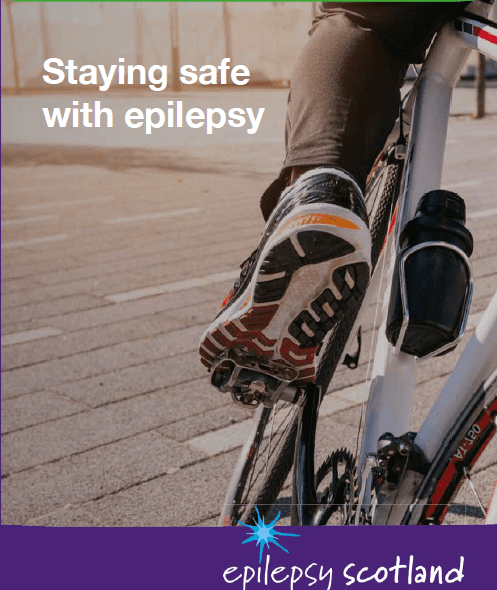Uschi Stickroth, Helpline & Information Officer at Epilepsy Scotland explains how our revised Staying safe with epilepsy guide can help identify and minimise possible risks.
Living with epilepsy is so much more than seizures. Safety is a major concern for anyone affected by epilepsy, their families and carers.
Therefore, we are pleased to launch our redesigned, revised and amended Staying safe with epilepsy guide.
Our Staying safe with epilepsy guide may help people to assess and minimise possible risks, if you or someone you look after has been diagnosed with epilepsy.
Between 60-70% of people can have their seizures prevented by anti-epileptic drugs (AEDs).
With good seizure control, there will usually be no need for restrictions and precautions for this group other than taking medication every day and staying mindful of possible seizure triggers.
These could be lack of sleep, stress or anxiety, or forgetting to take medication.
However, everyone, not just those with epilepsy, face risks in their home and when out and about.
These risks can be higher for someone with epilepsy. If seizures are not controlled by medication, or if the person has other health conditions and/or complex needs.
Assessing epilepsy alone, the level of risk depends on the frequency of seizures, the type of seizures a person has, whether there are any triggers, and whether they get a warning before a seizure.
Our factsheet is general guidance only. Every person’s circumstances and needs are unique and should be considered.

How can I identify risks?
If seizures are rare, only a few extra precautions may be necessary.
This will help minimise risks of injury. Some of the things to consider are:
- How long does the person usually take to fully recover from a seizure?
- How often do seizures occur?
- When do seizures usually occur? Is there a pattern?
- What type of seizures are they? What do they look like?
- Does the person have any triggers for their seizures?
- Do they lose consciousness during a seizure and/or suddenly fall down?
- Do they get a warning before a seizure?
- Does the person have a history of prolonged or serial seizures?
Keeping it in perspective
Being faced with sudden restrictions is difficult and upsetting. These restrictions may only be temporary.
Depending on your circumstances, many people can carry on with their life, going out, socialising or exercising.
In fact, staying active has many health benefits and some evidence suggests that a level of exercise can also be helpful with seizure control.
Also, maintaining relationships and connections with friends and family can also help with adjusting after a diagnosis.
Staying safe with epilepsy guide
Our Staying safe with epilepsy guide has information on how to stay safe in different areas of your home, from the bathroom, bedroom, stairs, kitchen and much more.
Our guide also provides safety information on sport and leisure activities and being a parent/carer with epilepsy.
If you would like to request a copy, please email contact@epilepsyscotland.org.uk or a digital copy can be accessed at the following link: www.epilepsyscotland.org.uk/here-for-you/publications/safety-and-first-aid.




